Shared todayAGI seriesIn-depth research report: "Intelligent exploration and development in the AGI era The road to implementation: Low-code and no-code application value report for Chinese enterprises V6》.
(Report produced by: Jiazi Guangnian Think Tank)
Total report: 47 pages
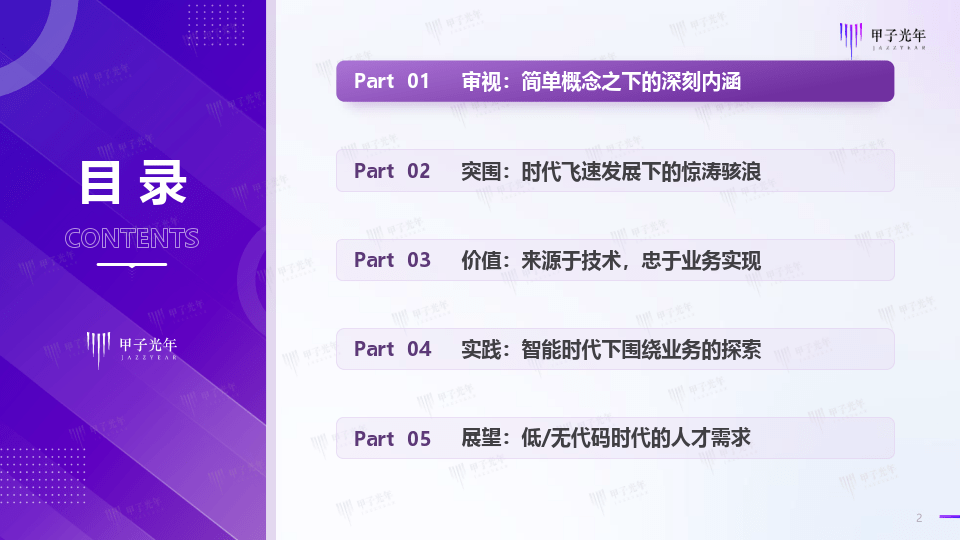
Click to add image description (up to 60 words)Edit
Tracing back to its roots, the focus on the low-code/no-code concept comes from the ultimate pursuit of development efficiency.
To observe the concept of low-code/no-code, we should not only look at the changes in the past 10 years. The market needs to extend the timeline and understand the essential pursuit behind the introduction of this concept - to reduce the obscurity of coding language and fundamentally Improve development efficiency. ChatGPT leads the world into the AGI era, and the practical implementation of low-code/no-code for development efficiency deserves rethinking.
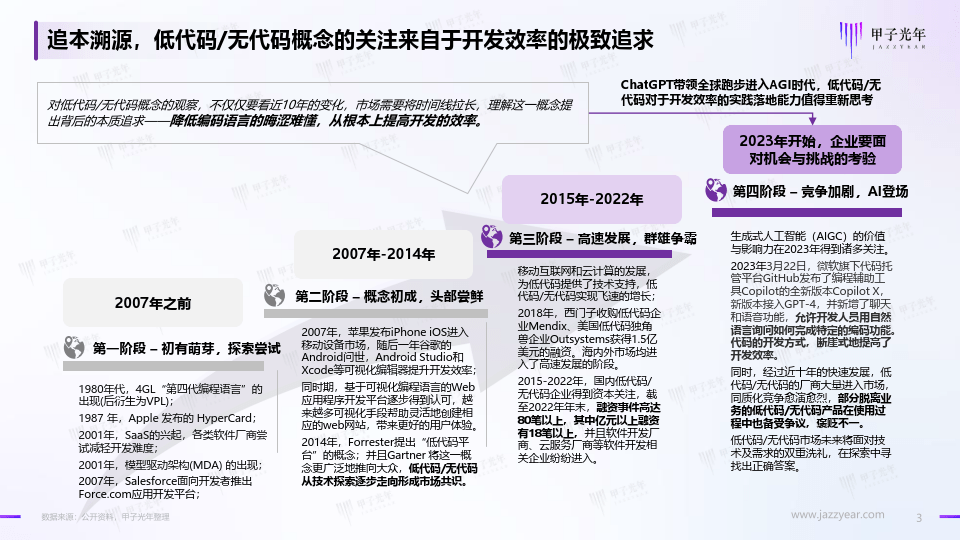
Broad understanding of low-code and no-code: multiple means to complete business digitalization project development
• Forrester's definition of low-code: the ability to quickly develop applications, configure and deploy business applications with "minimal handwritten code" and setup. It is also the current core demand for low-code development platform products and services in the market.
• Whether it is low-code, no-code or pure code, these concepts are not completely mutually exclusive, but express the varying degrees of assistance that tools can have on project development environment, time, and personnel requirements to solve the business needs and development of enterprise digital transformation. The contradiction between costs and more efficient use of the company's digital assets.
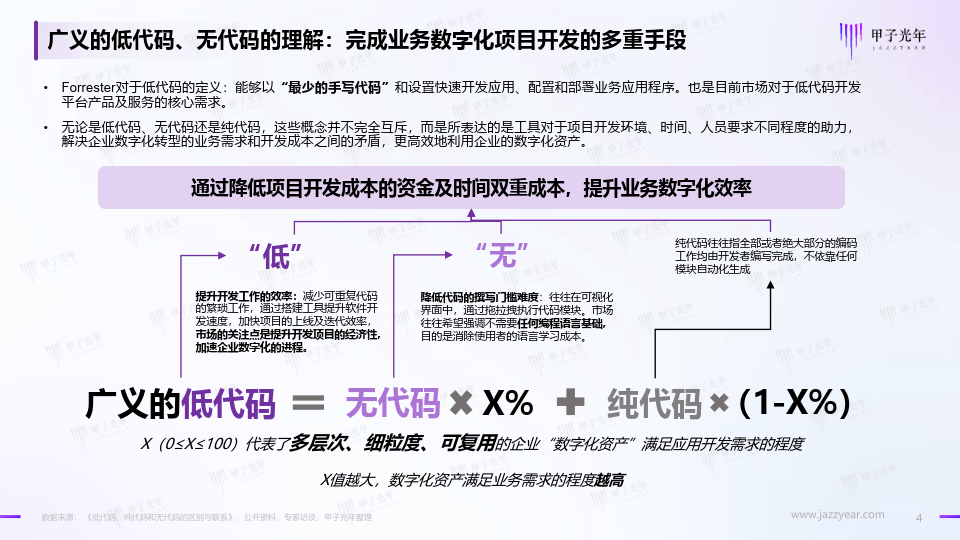

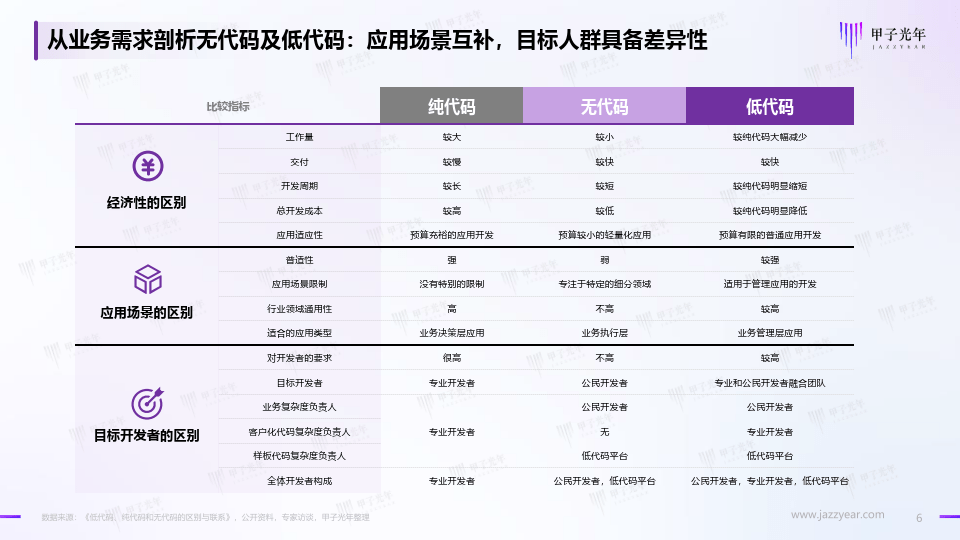
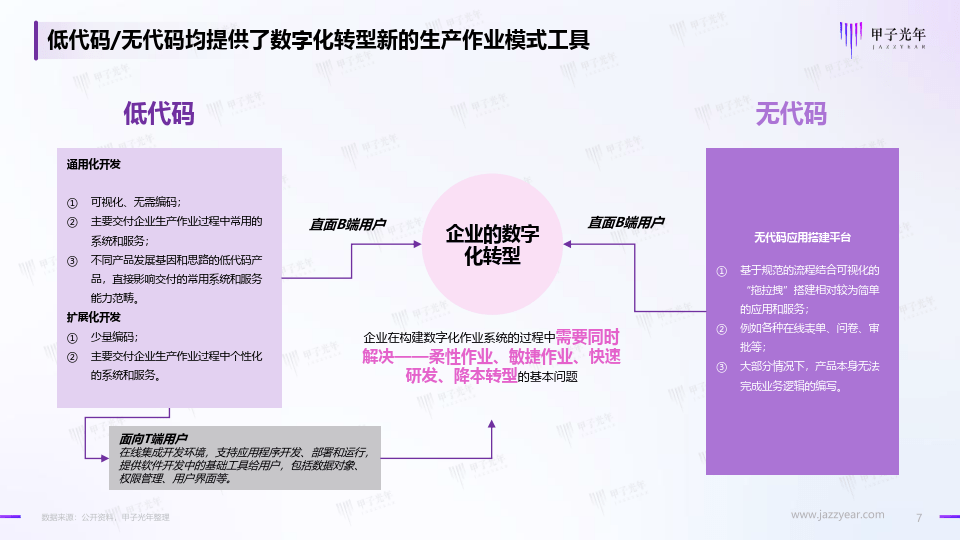
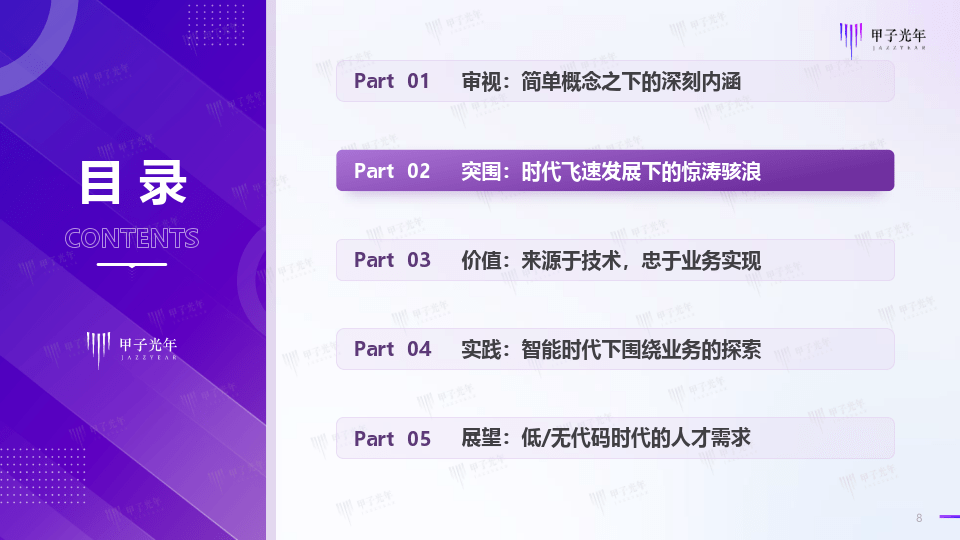
"Digitalization" remains an important focus for the development of global and Chinese enterprises and will continue to drive related markets
• Digital transformation remains a priority for global enterprises and is the only way for enterprises and organizations to seek to become digital enterprises. In digital enterprises, the use of technology for processes, products, services and experiences remains a key expenditure.
• Industrial digitization has promoted new breakthroughs in the development of China's digital economy. In 2022, the scale of China's digital economy will reach 50.2 trillion yuan, a year-on-year nominal growth of 10.3%. It has been significantly higher than the nominal GDP growth rate in the same period for 11 consecutive years. The digital economy accounts for the proportion of GDP Reaching 41.5%, this proportion is equivalent to the proportion of the secondary industry in the national economy.
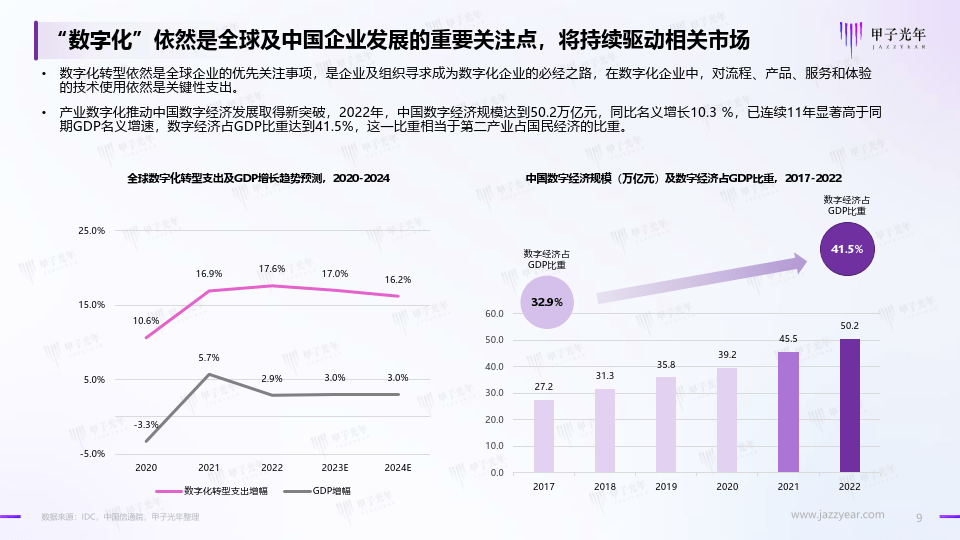
Chinese enterprises have new requirements in terms of depth and breadth of digital transformation
• Discuss digitalization as an overall enterprise transformation strategy, rather than staying at the level of technological innovation. Enterprises gradually realize that digitalization is no longer a simple technical concept or technology choice, but has evolved into an overall strategy related to the survival of the enterprise.
• Enterprises' discussions on technologies such as artificial intelligence, cloud technology, and big data are gradually turning to practical applications and effects, and they are more concerned about whether technology investments can achieve business goals. Enterprises' exploration of digital transformation has shifted from local single-point applications to systematic construction and upgrades. As the key to enterprise transformation, technology has shown huge influence, and the topics covered continue to expand and deepen.
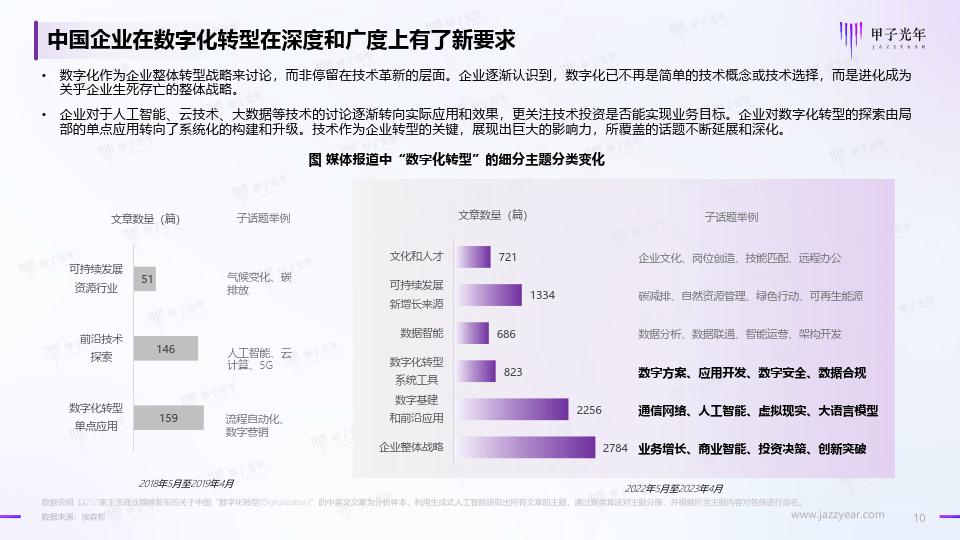
Enterprise digital business will bring a large number of innovation opportunities for enterprise-level software applications/services
• Increase in quantity: Enterprise-level applications/services can complete the company's digital business and provide new products, new services, new experiences and new processes. The development of the digital economy has brought a large number of new applications.
• Demand for innovation: Enterprise software innovation capabilities are closely related to enterprise digital maturity. Enterprises with higher maturity levels (such as in the management and operation, optimization and innovation stages) tend to have stronger software innovation capabilities (such as proactive innovation, leading trends).

Software business revenue has increased for nine consecutive years, and demand for digital business development continues to rise
• The rapid development of the software development industry has brought development opportunities for low-code/no-code platforms: In 2022, China’s software business revenue will jump to 10 trillion yuan, and there will be more than 35,000 enterprises above designated size in the national software and information technology service industry, with a total of Completed software business revenue of 10,612.6 billion yuan, a year-on-year increase of 11.2%.
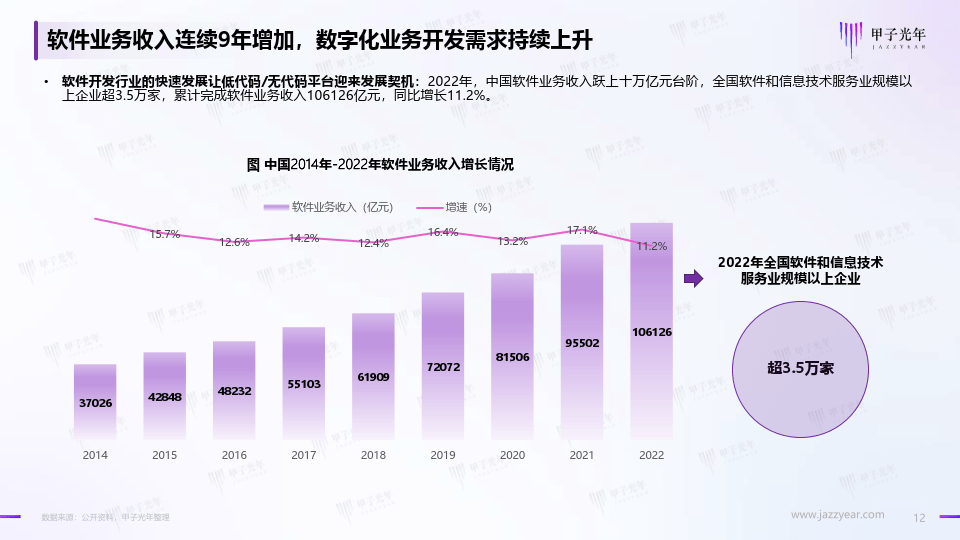
The development of China's low-code/no-code market comes from the dual pursuit of quality and efficiency in customized development
• In the digital era, the development of enterprise digital transformation requires customized development while taking into account quality and efficiency. The low-code/no-code market is highly aligned with this trend and has explosive growth opportunities. China's low-code/no-code product market has passed the early exploration period of technology and commercialization models. With the gradual improvement of its product capabilities, it has begun to gradually realize the development of enterprise core business systems, and the market has gradually entered a period of industry growth.
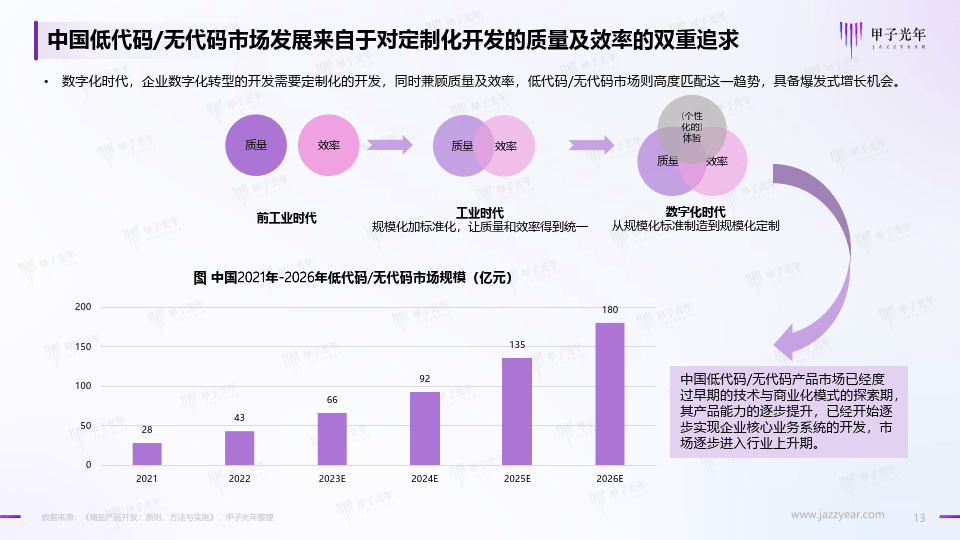

Putting aside the debate about "low" and "nothing", products need to solidly solve the details of digital construction
• No-code construction method/low-code development platform does provide more convenient technologies/tools for digital construction than pure code. However, after the rapid development of the market, enterprises are more concerned about how to use tools to solve their own business problems and choose more Tools that meet your requirements.
No-code construction platform: Build relatively simple applications and services based on standardized processes combined with visual "drag and drop".
Low-code development platform: an online integrated development environment that supports application development, deployment and operation, and provides users with basic tools in software development.

Low-code/no-code promotes “technology democratization” while also reshaping the relationship between technology and business.
• Application and service development model based on low-code products: It breaks functional silos and can easily align project parties’ understanding of application form and project progress through a unified visual language and a single application representation (page/data/logic) , to achieve a more ultimate agile development model, and BizDevOps, which is a further step based on traditional DevOps, to create an operating system behind digital business to continuously empower the innovation and development of digital business.
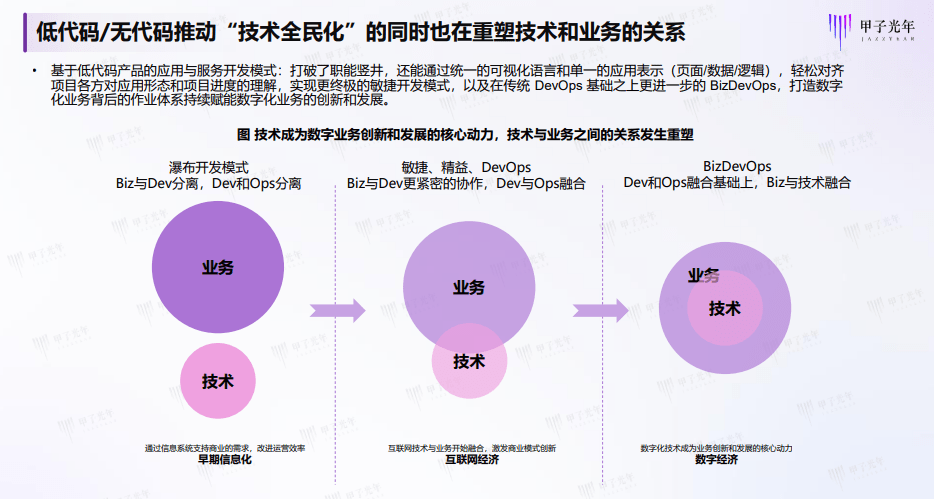
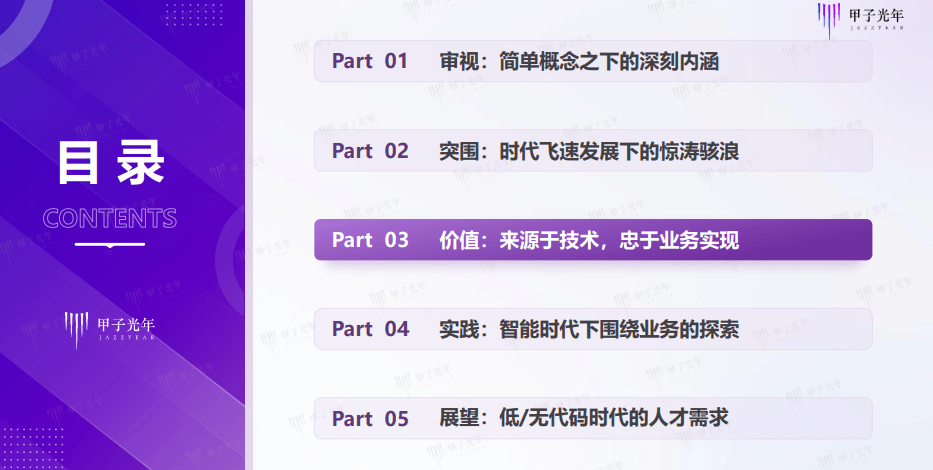
The digital transformation of enterprises requires low-code/no-code platforms to link data and business
1. Business capabilities: connecting value delivery links
From the customer's perspective, open up customer (business) value delivery links and accurately obtain, respond to and meet customers' (personalized) needs.
2. Digital capabilities: full-link digital operation
Based on the essential understanding of the business, establish the underlying digital model and effectively connect the digital world with the physical world. Based on this, data is shared across the entire link, the value delivery link is reconstructed, and the efficiency and quality of the entire value delivery link are ensured.
3. Data capabilities: Precipitate and release the value of data assets
Based on full, all-factor and real-time data, we ensure and continuously improve the efficiency of business operations. Based on this, data assets are precipitated and applied to stimulate business innovation and create new business models and user experiences.

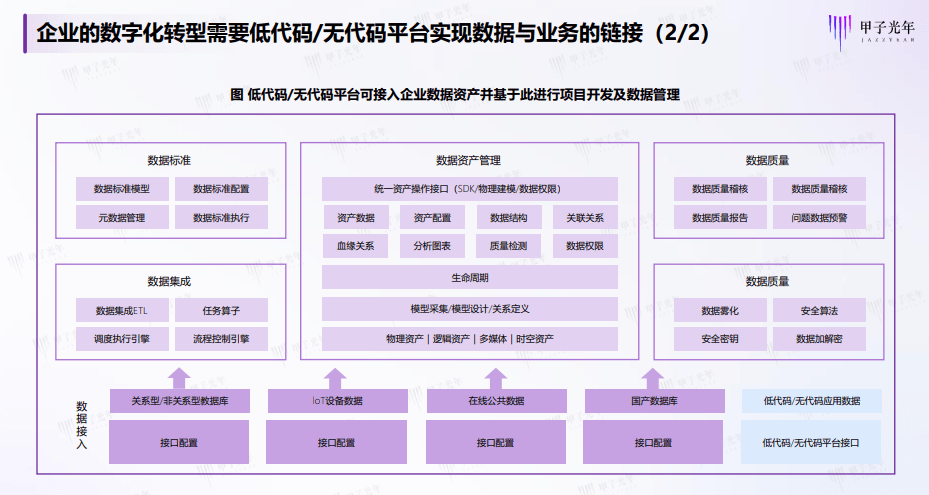

The value of AIGC is not only to generate code in one step, but also to bring more intelligent interaction methods.
• The biggest impact of AIGC on low-code/no-code platforms comes from the market’s extremely high expectations for AIGC. In particular, the similarity between code and natural language in model training has given the market high expectations.
• However, problems such as the uncertainty inherent in large models make it difficult to quickly form a commercial product package in a short period of time. In the short term, the functions are more reflected in the improvement of interactive experience.
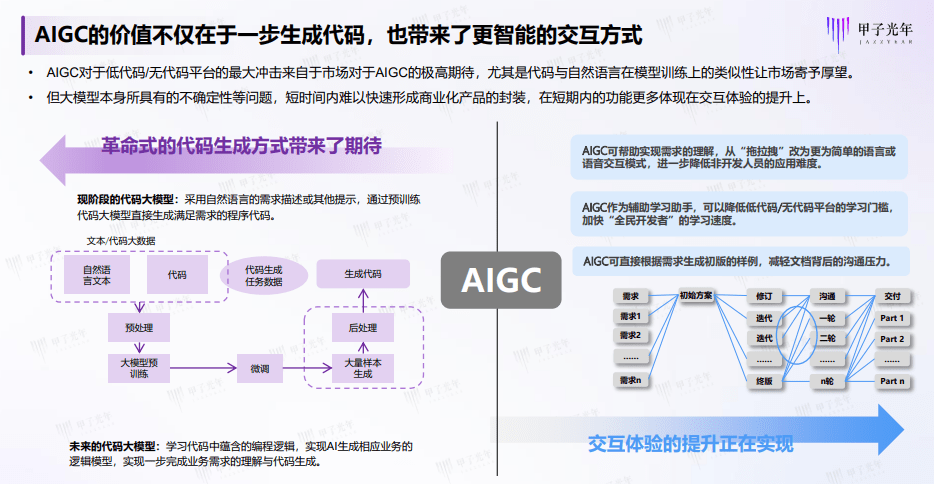
Total report: 47 pages